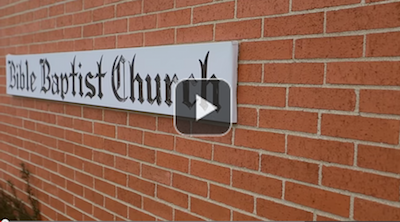AUGUST 11, 2019
CHRIST’S APPEARANCE TO HIS DISCIPLES AT THE SEA OF TIBERIAS
INTRODUCTION:
1. John seems to have finished his account of the life of Christ with the foregoing chapter. He concluded by noting that the disciples had witnessed many other signs besides the select miracles of which he had made mention in his Gospel. All of these mighty works testified of who He was.
2. The greatest sign of all was the last. To the scribes and Pharisees who sought a sign Jesus said, “…there shall no sign be given to it, but the sign of Jonas: For as Jonas was three days and three nights in the whale’s belly; so shall the Son of man be three days and three nights in the heart of the earth.” (Matt. 12:38-40)
3. John here adds an appendix to his Gospel in which he records one of those many other sings, this one occurring after the resurrection. Some believe that John was there referring specifically to signs done after the resurrection. This hardly seems likely, since it does not appear that he was constantly with them like He was before.
4. The miracle that is here recorded is a sign of the great success that they will have as fishers of men in the carrying out of the great commission after His ascension back to the Father’s right hand and the sending of the Holy Spirit. For this reason, “Jesus showed himself again to the disciples at the Sea of Tiberias.”
I. JESUS APPEARED TO SEVEN OF THE ELEVEN DISCIPLES WHO WERE JOINED TOGETHER ON A FISHING EXPEDITION. (VERSES 1-3) This was not a fishing trip for recreation, but for business.
A. THIS APPEARANCE WAS NOT ON A LORD’S DAY AS THE TWO BEFORE, AND NOT TO ALL OF THE DISCIPLES. (VERSE 2)
1. The disciples were not all gathered for a solemn assembly where they might have expected the Lord to appear.
2. Here seven disciples were tending to daily business. It’s good for all to come together for worship, and it is also good to seek Christian companionship in the common affairs of life.
3. This period was the interim between Christ’s resurrection and the meeting which He had appointed in Galilee. (Matt. 28:16)
B. THE DECISION TO GO OUT IN A BOAT TO FISH SEEMS TO HAVE BEEN SPONTANEOUS. (VSE. 3)
1. Peter was a fisherman by trade, as were James, John, and Andrew. (Andrew is believed to be one of the two unnamed disciples) Peter announced to the others that he was going fishing, and it would seem that they all at once decided to go with him. They all were sort of at a loss as to what to do with their time.
2. Some denounce Peter and the others for returning to their nets, which they had left to follow Christ. If they had been wrong in doing this, Christ would not have countenanced them in it with a favorable visit.
a) They are rather to be commended for their actions. They would not be idle, but instead, redeemed the time.
b) Their commission was not yet perfected so far as their readiness to commence carrying it out. In fact, it is likely that their Lord had instructed them to hold their peace on the subject of His resurrection until after the pouring out of the Spirit.
c) These actions prove their industry and humility. They would provide for their families, which was their duty, and they were willing to work at this common trade, even though they were called to be Christ’s messengers.
3. Though they were industrious, their efforts were in vain. “…and that night they caught nothing.”
a) Most likely they toiled all night, like on a previous occasion. (Luke 5:5)
b) Providence ordered this failure so that the miraculous draught of fishes in the morning might be the more wonderful and satisfying.
c) God often has designs in our disappointments that are very gracious.
II. IT WAS AFTER A NIGHT OF FRUITLESS TOIL THAT JESUS SHOWED HIMSELF TO THE DISCIPLES. (VERSES 4-6) His body, though a real body, was raised a spiritual body, and was visible only when He was pleased to make it so, or rather came and removed so quickly that it was here or there in an instant. Four things stand out in the appearance of Christ to these seven disciples.
A. THE PERFECT TIMING OF HIS APPEARANCE. “WHEN THE MORNING WAS COME.”
1. After a long and fruitless night of fishing; this was hard work – casting nets and dragging them in again and again.
2. Christ’s time of making Himself known to His people is when they are most at a loss. (Psa. 30:5)
3. After His resurrection, Christ came not to His disciples walking on the water, but He rather stood on the shore, because now they were to come toward Him.
B. THE PROGRESSIVE REVELATION OF HIMSELF TO THEM. “…BUT THE DISCIPLES KNEW NOT THAT IT WAS JESUS.”
1. Little expecting to see Him there, they took Him for some ordinary person.
2. Christ is often nearer to us than we perceive that He is, and this we often find afterward to our great comfort.
C. THE PITY HE HAD ON THEM IN REVEALING WHO HE WAS. “CHILDREN, HAVE YE ANY MEAT?”
1. He spoke to them as His children, just as He had done before.
2. The inquiry is very kind: “Have you any meat?” He asked with a fatherly concern if their labors had provided them with their body’s need.
3. This was an invitation for them to open their case to Him.
D. THE INSTANCE OF HIS POWER BY WHICH HE SHOWED HIMSELF TO THEM. “CAST THE NET ON THE RIGHT SIDE OF THE SHIP AND YE SHALL FIND.”
1. They obeyed the command, not yet knowing that it was the Lord who stood on the shore.
2. They obeyed to find that His word was true. “…and ye shall find,” He said. ”They cast therefore, and now they were unable to draw it for the multitude of fishes.”
III. THE DISCIPLES THEN RECEIVED THE DISCOVERY WHICH CHRIST MADE OF HIMSELF. (VRS. 7, 8)
A. JOHN WAS THE FIRST TO REALIZE THAT IT WAS THE LORD WHO WAS INSTRUCTING THEM. (VERSE 7a) John again refers to himself as that disciple whom Jesus loved.
B. PETER WAS OVERCOME WITH EXCITEMENT AND JOY TO KNOW IT WAS THE LORD. (VSE. 7b)
1. He showed his respect to Christ by girding his fisher’s coat about him. He had removed his upper garment for work, but he put it back on before jumping into the water.
2. He showed the strength of his affection for Christ and his earnest desire to be with Him.
C. THE REST OF THE DISCIPLES HASTENED AS QUICKLY TO SHORE AS THE BOAT AND THE NET THEY WERE DRAGGING WOULD ALLOW. (VERSE 8)
1. How differently those who love the Lord will express their love.
2. Peter forgot about everything else he was doing and hurried to Christ. Others stayed with the ship, not leaving it or the catch to drift away.
3. We admire Peter’s zeal, and we also appreciate those who patiently stayed with the ship and brought it to shore.
IV. THE DISCIPLES WERE NEXT TREATED TO A WELCOME MEAL BY THE LORD HIMSELF. (VRS. 9-14)
A. JESUS HAD PROVISIONS READY FOR THEM. (VERSE 9)
1. The risen Christ, though in a new, spiritual, and glorified body, was nevertheless the same tender, loving, and gracious Person that they had known before. He, knowing that they were cold, weary, and hungry, was waiting for them with a fire to warm and dry them, and broiled fish and bread to nourish and refresh them.
2. As for how He came to have fish and bread, and the wherewithal to build a fire, we need not be puzzled. He, who could prepare food for Elijah in the wilderness; who could multiply loaves and fishes at will, was not at a loss in any case. Even Satan knew that He could have turned stones into loaves of bread had He been pleased to do so.(I Kings 19:4-8; John 6:5-12; Matt. 4:3, 4)
3. By this example we are assured that our Lord knows what we have need of and is able to supply our need, whether by natural process or by supernatural intervention if necessary.
4. By this miraculous provision the disciples would be reassured that even though they were asked to forsake all for their calling, they would never be in want. (Matt. 19:27-30; Phil. 4:19; Matt. 6:33)
B. JESUS CALLED FOR SOME OF WHAT THEY HAD CAUGHT. (VERSES 10, 11)
1. He provided for them from His own bounty to assure them that He is able to do exceeding abundantly above what they could ask or think (Eph. 3:20), but He would also have them eat form the labor of their own hands. (Psa. 128:2)
a) As all here is emblematic of their calling to be fishers of men, He is showing them how they which preach the Gospel should live of the Gospel. (I Cor. 9:14)
b) They who are fishers of men must bring all they catch to their Master, for all are His.
2. In obedience to the Lord’s command, Peter went up and drew the net upon the shore. (Verse 11)
a) Notice, the net full of fishes that they were previously unable to drag to shore, Peter, at the command of the Lord, went up and drew to land. Ministers are not able to bring men to Christ except God Himself draw them. (John 6:44)
b) It was Peter who had before so zealously demonstrated his affection for Christ (Verse 7), that now was most forward in his obedience to go for Him, and draw in the net.
c) The count of fishes tallied 153, and many of them were very large, and yet the net did not break. This fact is in contrast to what happened on a previous occasion three years before. (Luke 5:1-11) The nets from which Christ was calling them were those of their earthly profession, but the net to which He called them is the Gospel net (see Matt. 13:47), which cannot fail.
C. JESUS INVITED THE DISCIPLES TO COME AND DINE WITH HIM. (VERSES 12-14)
1. The gracious invitation was extended. “Jesus saith unto them, Come and dine.”
2. The reverent response of the disciples. “None of the disciples durst ask him, Who art thou…”
3. The gracious condescension of Christ. (Verse 13)
a) He came to them.
b) He divided and served them.
4. It is noted by John that this was the third time that the risen Christ had showed Himself to His disciples. (Verse 14) The first two appearances are recorded in the previous chapter. (Ch. 20:19, 26) It has been pointed out by some Bible commentators that by “third time” we are to understand third day, noting that on the first day (the day of the resurrection) He appeared numerous times. It seems to me that John is referring to those times when He appeared to the disciples as a group, this being the third such appearance.


